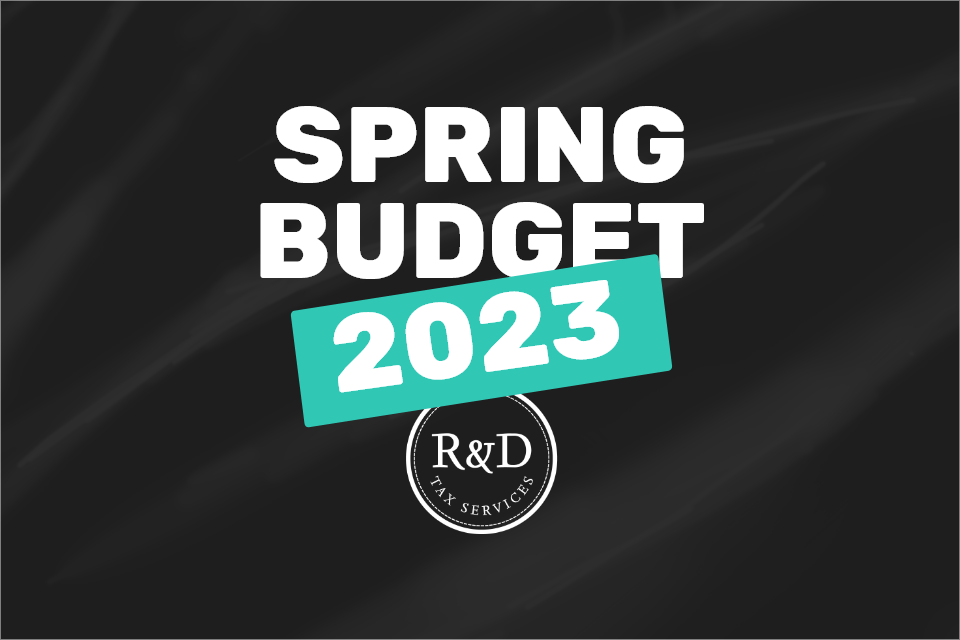Like many of you we’re fresh from watching the Spring Budget 2023, which Jeremy Hunt explained was built around the ‘Four E’s’ of Enterprise, Education, Employment and Everywhere.
Announcements included reforms in childcare and helping parents, mothers especially, return to work or find work after having children. Highlights being a commitment to extend free childcare to all under fives, reform aimed at increasing the number of child-minders and covering the upfront costs associated with childcare that can be a barrier to returning to work.
Alongside announcements around childcare, education and green energy; incentivising innovation was a theme throughout the budget; one that R&D tax stakeholders have watched unfold for over a year. The news is overwhelmingly positive, and the changes cement the UK as a competitive R&D hub by offering the joint highest headline rate of tax relief in the G7 and by signalling the government’s continuing commitment to R&D tax incentives as a policy tool.
The major update centres on the creation of a new R&D scheme for loss-making R&D-intensive SMEs. Eligible loss-making companies will be able to claim £27 from HMRC for every £100 of R&D investment, instead of £18.60 for non R&D intensive loss makers.
“It’s a £1.8BN package of support helping 20,000 cutting edge companies, who day-by-day are turning Britain into a science superpower” – Jeremy Hunt
It appears that the new scheme is intended to address concerns from R&D incentives specialists and industrial bodies that highly innovative startups and other companies investing most heavily in R&D would be most adversely impacted by the previously announced reduction in the rate of additional deduction and the reduction in the surrender rate.
It remains to be seen whether the new scheme will be operated separately or will effectively be “bolted-on” to the existing SME scheme and how the scheme will interact with other compliance requirements including the PAYE-cap and HMRC’s pre-notification procedure whose details are still being worked out.
As explained in the budget, innovation requires investment, and the government has introduced and continues to introduce various measures to incentivise business investment. One of the measures is the ‘full expensing policy’, which allows businesses to write off the cost of qualifying expenditure against taxable income, reducing their overall tax bill.
This policy will be in effect from April 2023 to March 2026. During this period, companies can save up to 25p on their tax bill for every £1 invested in qualifying expenditure. Alongside R&D tax relief incentives, this is a welcome support package for innovative businesses.
Another measure introduced by the government is the ‘super-deduction’, which encourages companies to invest in plant and machinery by providing them with a 130% first-year capital allowance. The government has also announced that it will make the Annual Investment Allowance of £1 million permanent, which means that 99% of businesses will receive 100% tax relief on their qualifying plant and machinery investments in the year of investment. This is likely to increase the number of businesses able to invest in the creation of infrastructure for R&D activity and help ensure innovation is kept in the UK, where it may have been cheaper previously to take it abroad.
Throughout the budget announcement, the government reiterated that it is committed to driving economic growth by supporting businesses through various measures, including tax simplification, smarter regulation, and capital allowances.
The government has introduced measures that clearly encourage businesses to invest in R&D, plant and machinery, and other qualifying expenditure. Overall, on its face, the Spring 2023 budget should leave market leading, innovative companies feeling recognised and encouraged to pursue R&D activities.
Key R&D Takeaways Include:
The Chancellor has announced a new R&D scheme for 20,000 SMEs in the UK – coming in from 1 April 2023 and worth around £500 million per year. The scheme is targeted specifically at loss making R&D intensive SMEs.
A company is considered R&D intensive where its qualifying R&D expenditure is worth 40% or more of its total expenditure. Eligible loss-making companies will be able to claim £27 from HMRC for every £100 of R&D investment, instead of £18.60 for non R&D intensive loss makers.
Around 1,000 claiming companies will come from the pharmaceutical and life sciences industry. This will support the development of life saving medicines.
Around 4,000 digital SMEs will be from the computer programming, consultancy, and related activities sector. This will support the development of AI, machine learning and other digital based technologies.
Around 3,000 other manufacturing firms, and another 3,000 professional, scientific, and technical activities firms will also qualify for the enhanced support. This builds on previously announced changes to support modern research methods by expanding the scope of qualifying expenditure for R&D reliefs to include data & cloud computing costs.
The permanent increase from 13% to 20% for the R&D Expenditure Credit rate announced at Autumn Statement 2022 also means the UK now has the joint highest uncapped headline rate of tax relief in the G7 for large companies.
Combining the government’s spending on R&D with the support from tax reliefs, total UK R&D support as a proportion of GDP is forecast to increase to approximately 1.0% in 2024/25, up from approximately 0.9% in 2019. The latest 2019 OECD average is 0.7% of GDP.

